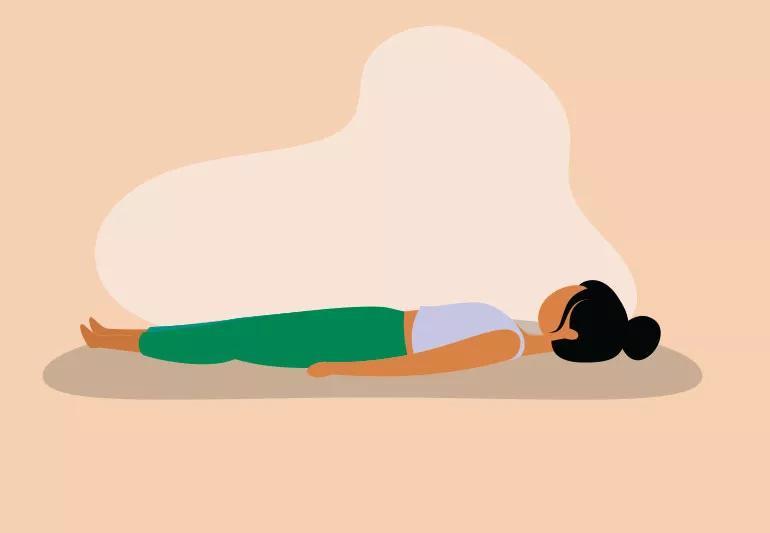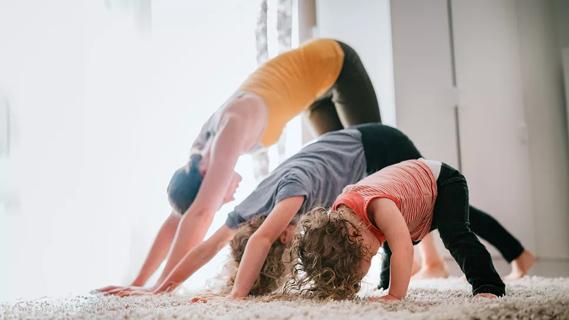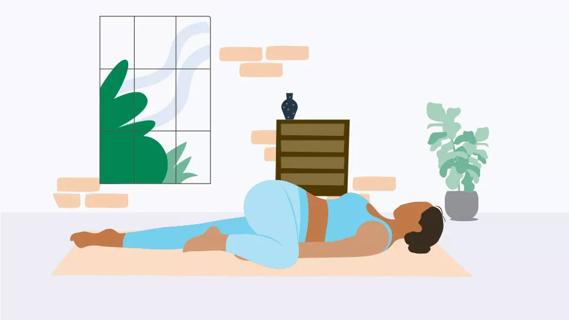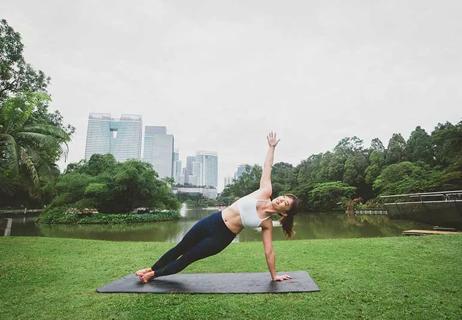If you're looking for deep relaxation, this form of yoga can help

So, flowing and holding poses in a heated room isn’t your thing.
Advertisement
Cleveland Clinic is a non-profit academic medical center. Advertising on our site helps support our mission. We do not endorse non-Cleveland Clinic products or services. Policy
Fair enough.
But don’t give up on yoga quite yet. Did you know that there’s a style of yoga that just involves relaxing on a mat, blanket or even your bed?
Interested now? We’ll keep going.
And the best part about this style of yoga is that a 45-minute session could leave you feeling like you indulged in a peaceful three-hour nap.
If you’re ready for an easy, pose-free way to slow down and recover from the stressors in your life, read on to discover how yoga nidra could be the answer.
Yoga nidra involves slowing down and chilling out. So does meditation. While some people tend to lump them together, they really are two different practices.
“Yoga nidra is like meditation, but yet it’s not,” says yoga therapist and yoga program manager, Judi Bar. “There are overlaps, but there also are key differences. With yoga nidra, you are lying down and the goal is to move into a deep state of conscious awareness sleep, which is a deeper state of relaxation with awareness. This state involves moving from consciousness while awake to dreaming and then to not-dreaming while remaining awake — going past the unconscious to the conscious.” Bar says that this practice is guided like some meditation practices, but it’s very structured.
Advertisement
“With meditation, you’re sitting and in a waking state of consciousness while focusing the mind and allowing thoughts to come and go. Meditation makes it possible for us to get to the theta state — the state we go through to get to the delta state, which is the place of the deepest sleep cycle. The delta state is a deep healing state. That’s where we’re trying to get through yoga nidra. In this state, the body and mind rest and the consciousness is awake.”
Bar says that yoga nidra works with the autonomic nervous system. The autonomic nervous system regulates processes of the body that take place without a conscious effort (heartbeat, breathing, digestion and blood flow). This system also includes the sympathetic and parasympathetic nervous systems.
Meditation helps us calm the sympathetic nervous system; mainly, our fight-or-flight response, explains Bar. “We do a meditation practice to basically calm the sympathetic, or fight-or-flight and activate the parasympathetic more. There’s such a benefit when those are balanced overall for immunity, digestion and stress management. But in this deeper relaxation, the pineal gland is activated and that releases the hormone melatonin.”
Melatonin is a powerful antioxidant. It can also help manage immune function, blood pressure, cortisol levels and induce restful sleep.
A recent study showed that while meditation and yoga nidra were both effective in reducing anxiety and stress, yoga nidra seemed to be more effective in reducing anxiety. The study also suggested that yoga nidra can be a useful tool in reducing both cognitive and physiological symptoms of anxiety.
Some yoga studios offer yoga nidra, but you can also do it at home with the help of YouTube or a meditation app. You don’t need fancy equipment either. You can lie flat on your back on a yoga mat or a blanket with a bolster or pillow supporting your lower back, spine and your head. You can even put a blanket or pillow under your knees.
Bar says there are 10 stages of a yoga nidra practice. These steps are outlined by Richard Miller in his “10 Stages of Yoga Nidra.”
Advertisement
While yoga nidra might seem much easier than traditional yoga, Bar says you still have to practice, especially if you’re not used to meditation or quieting your mind. She recommends practicing away from distractions and in a darker room. You can use a sleep mask to block out light if you need to. Bar also recommends covering up with a blanket since the body tends to cool down when it’s at rest.
If lying on the floor for a while wouldn’t be comfortable for you, you can practice yoga nidra in a recliner or even in bed. And you don’t have to start with a long session. Start with 15 or 20 minutes and work your way up. You also don’t have to do yoga nidra in the middle of the day. A nighttime practice can help you sleep tight through most of the night.
And like with most things, don’t give up if you struggle with your first session. Quieting your mind and not doing anything is much harder than you think. So give yoga nidra a few tries. You’ll get the hang of it in no time — especially when your mind and body need time to rest and recover.
Advertisement
Learn more about our editorial process.
Advertisement

Focus on inhaling and exhaling through 12 steps of a complete sequence

Stand tall and feel grounded with this foundational yoga pose

This transitional and restorative yoga pose provides a full-body stretch

Somatic yoga focuses on the sensation and experience of movement — not striking perfect poses

Balasana, or child’s pose, is a restorative full-body yoga technique

Kids’ yoga can help kiddos become more aware of their physical, mental and emotional selves

This mindful practice is designed to give you mental and physical relaxation

You can work more than your abdominals

If you’re feeling short of breath, sleep can be tough — propping yourself up or sleeping on your side may help

If you fear the unknown or find yourself needing reassurance often, you may identify with this attachment style

If you’re looking to boost your gut health, it’s better to get fiber from whole foods